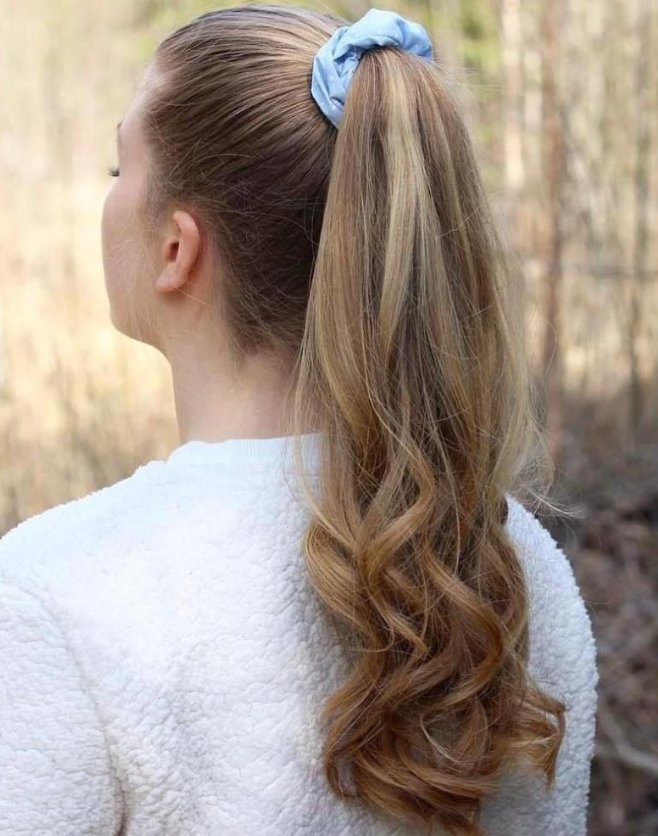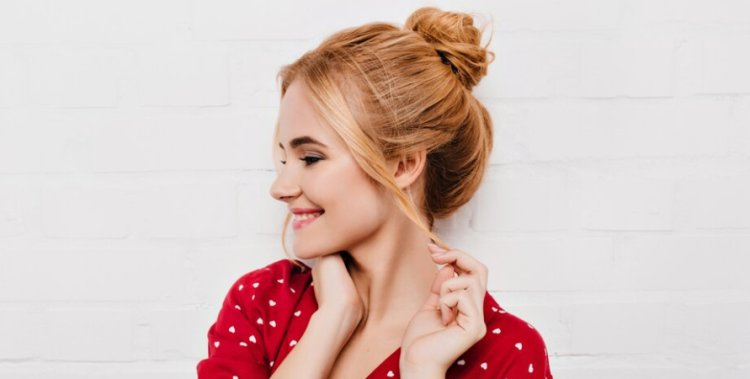Hair Toppers: The Ultimate Solution for Thicker, Fuller Hair
Discover the perfect hair topper to add volume, length, and fullness to your hair. Explore different types, including clip-ins, tape-ins, and halo toppers, and learn how to choose and care for them for a natural, stylish look.

Hair toppers are a game-changer for anyone looking to add volume, thickness, or coverage to their natural hair without the commitment of a full wig. Whether you’re dealing with thinning hair or hair loss, or simply want to experiment with a new look, hair toppers offer a flexible and non-permanent solution. In this article, we’ll explore what hair toppers are, the different types available, and how to choose and care for them to achieve your desired style.

What Are Hair Toppers?
Hair toppers are accessories designed to be worn on top of your natural hair to enhance its volume, fullness, or length. They are typically made from synthetic or human hair and come in various styles and designs to suit different needs. Hair toppers can be clipped, taped, or integrated into natural hair using other methods. They are a great way to cover areas of thinning or patchy hair, as well as to add texture and style without the need for a permanent change.
Unlike wigs, which cover the entire head, hair toppers are more targeted, providing coverage or volume to specific areas. This makes them a popular choice for those who still want to show off their natural hair while adding an extra boost.
Why Do People Use Hair Toppers?
There are several reasons why women (and men) choose to use hair toppers. These versatile accessories can be used for a variety of hair-related needs:
-
Hair Loss or Thinning: One of the most common reasons people turn to hair toppers is to conceal areas of thinning hair or bald spots. Conditions like alopecia, chemotherapy, or simply age-related hair thinning can leave areas of the scalp exposed. Hair toppers can cover these areas while giving the hair a fuller appearance.
-
Volume and Fullness: If you have fine or flat hair, a hair topper can provide an instant solution to create volume and thickness. Adding extra layers or a bit of extra length can make a big difference in how your hair looks.
-
Temporary Styling: Hair toppers allow for temporary changes to your hairstyle. Whether you want to add a pop of color, experiment with a new length, or simply try something different for a special occasion, hair toppers offer flexibility without the need for long-term commitment.
-
Protective Styling: Some individuals use hair toppers as a protective style, especially if they are growing out their natural hair or dealing with damage. By covering their natural hair, they can reduce the need for constant styling and manipulation, which can help prevent breakage.
Types of Hair Toppers
Hair toppers come in many forms, each offering different benefits depending on your specific needs. Here are the most common types of hair toppers:
-
Clip-In Hair Toppers
Clip-in hair toppers are one of the most popular and easy-to-use options. They feature small clips that can be attached to your natural hair. These toppers can be worn anywhere on the scalp, whether it’s the crown, temples, or along the part line. Clip-in toppers are available in various lengths, colors, and textures, allowing for a customized look. -
Tape-In Hair Toppers
Tape-in hair toppers use adhesive strips to attach to your natural hair. These are typically less bulky than clip-ins and can be worn for longer periods, as the adhesive provides a secure hold. Tape-in toppers are ideal for women who want a more seamless, natural-looking addition to their hair. -
Halo Hair Toppers
Halo hair toppers are unique in that they are designed to be worn like a crown around the head. The topper features a thin, clear wire that sits securely on top of the head, with hair falling naturally around it. The halo design provides volume and length without the need for clips or adhesives, making it a great option for those looking for a hassle-free solution. -
Wiglet Toppers
Wiglets are smaller, partial wigs that are designed to cover specific areas of the scalp. They are commonly used to add volume to the crown or to cover bald spots. Wiglet toppers usually have adjustable straps and come in a variety of sizes to accommodate different areas of hair loss. -
Integration Hair Toppers
Integration hair toppers are made with open-weave mesh, allowing your natural hair to be woven through the topper. This design provides a more natural and blended appearance, as the topper is seamlessly integrated with your own hair. Integration toppers are typically used for adding thickness and volume while maintaining a natural look. -
Bangs or Fringe Toppers
For those who want to experiment with bangs or fringe without cutting their natural hair, fringe toppers are the perfect solution. These toppers come pre-cut with bangs and can be clipped into place. This is a great way to try out a new style without the commitment of cutting or styling your natural hair.
How to Choose the Right Hair Topper
When choosing a hair topper, there are several factors to consider to ensure you get the best fit for your needs:
-
Hair Texture and Color
Choose a topper that matches your natural hair texture and color. If you have curly hair, look for a curly or wavy topper to blend seamlessly. The same goes for straight or textured hair. When it comes to color, many hair toppers are available in a range of shades, from light blonde to deep brunette. If you’re unsure about the perfect match, consider visiting a professional stylist who can help with the selection. -
Length and Volume
Decide how much length or volume you want to add to your hair. Some people use hair toppers to add a few inches of length, while others may want to achieve dramatic volume. Consider your overall hairstyle goals when selecting the right length and volume for your topper. -
Method of Attachment
Consider how you want to attach the topper. If you prefer a temporary, easy-to-use option, clip-ins might be the best choice. For a more secure and long-lasting hold, tape-ins or integration toppers may be more suitable. If comfort and ease of use are a priority, halo hair toppers offer a no-fuss solution. -
Comfort
Choose a hair topper that feels comfortable when worn. Since hair toppers are designed to be worn on top of your natural hair, they should not cause discomfort or irritation. Look for options with adjustable straps, breathable materials, and lightweight designs for the best fit.
Caring for Your Hair Toppers
To keep your hair topper looking its best, proper care is essential. Here are some tips for maintaining your topper:
-
Wash Regularly: Wash your topper as needed, following the manufacturer's instructions. Synthetic hair should be washed with special care to avoid damage, while human hair toppers can be treated like your natural hair.
-
Avoid Heat: If you’re using a synthetic topper, avoid heat styling tools, as they can melt or damage the fibers. Human hair toppers can be styled with heat, but be sure to use lower temperatures to prevent damage.
-
Store Properly: When not in use, store your hair topper in a safe place, such as a wig stand or storage bag, to prevent tangling and damage.
Conclusion
Hair toppers are a fantastic solution for adding volume, length, and coverage without the need for permanent changes. Whether you’re dealing with thinning hair, hair loss, or simply want to switch up your look, there’s a hair topper out there to suit your needs. With various types, colors, and attachment methods available, you can easily find the perfect topper to complement your style and enhance your natural hair. With proper care and maintenance, your hair topper will continue to help you achieve the beautiful, full hair you desire.
What's Your Reaction?
















.jpg)


